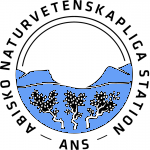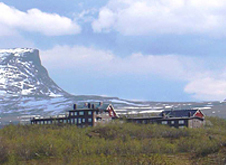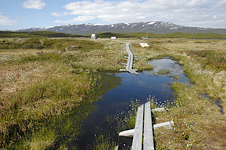Abisko, Sweden
 |
|
 |
Abisko Naturvetenskapliga Station (ANS), (Abisko Scientific Research Station) is located at Abisko, Sweden, (68°21´N, 18°49´E), about 200 km north of the Arctic Circle and approximately 385 m above sea level, on the south shore of Lake Torneträsk.
The station is situated in a 46-hectare nature reserve (established in 1982) close to the Abisko National Park, which covers 75km2. Late winter, spring, and summer bring a number of tourists to this otherwise sparsely populated area.
Abisko Scientific Research Station dates back to 1903 when the first field station was established in the Torneträsk area. Since 1935 it has been administered by the Royal Swedish Academy of Sciences. Most recently operations have been transferred to the Swedish Polar Secretariat.
Research at ANS
ANS is host to many investigations in areas of biosciences and geosciences. Staff emphasis is on plant ecology and meteorology. Their ecological projects study the dynamics of plant populations and their latitudinal and altitudinal limitations. Meteorological projects focus on recent climate changes in the region and local variations of that microclimate in subalpine and alpine ecosystems.
Facilities include chemistry, radio- and geolaboratories, microscopy, drawing and computer rooms, a greenhouse, a darkroom and growth room, a lecture hall and reference collection room, and accommodations complete with a kitchen, lounge, dining room, excercise room and saunas.



